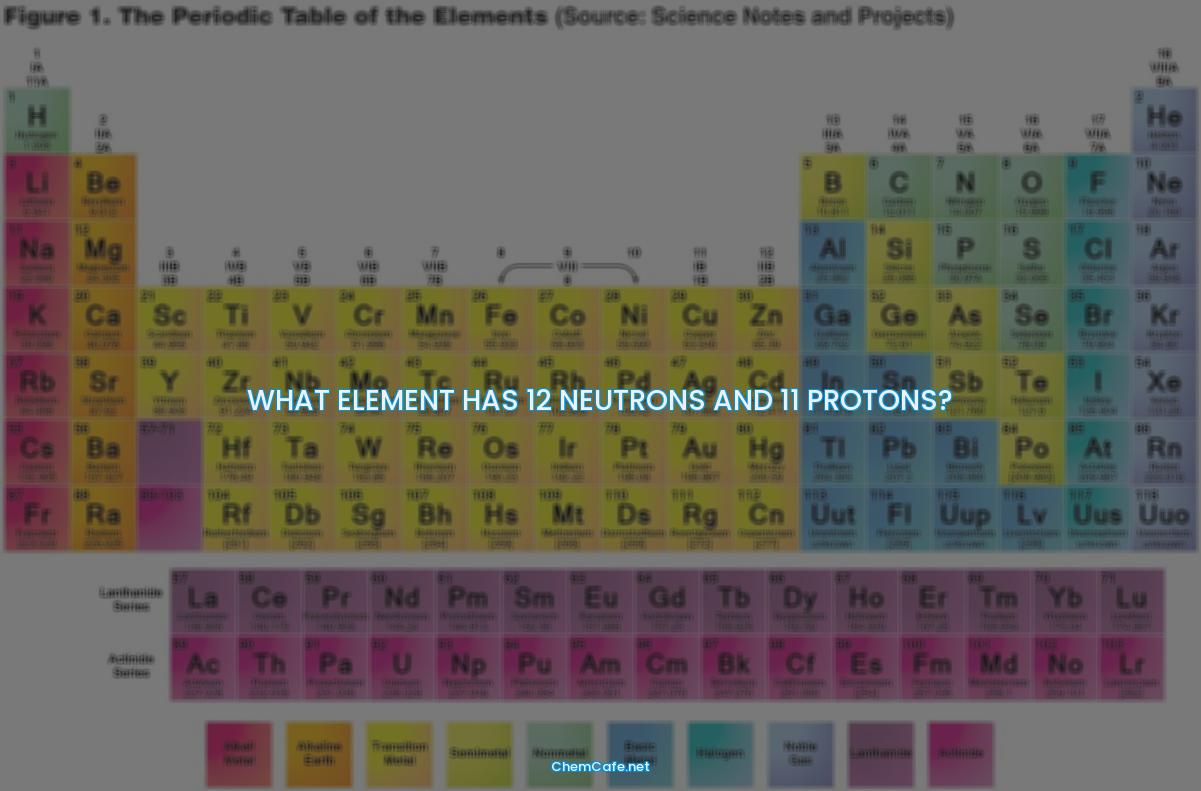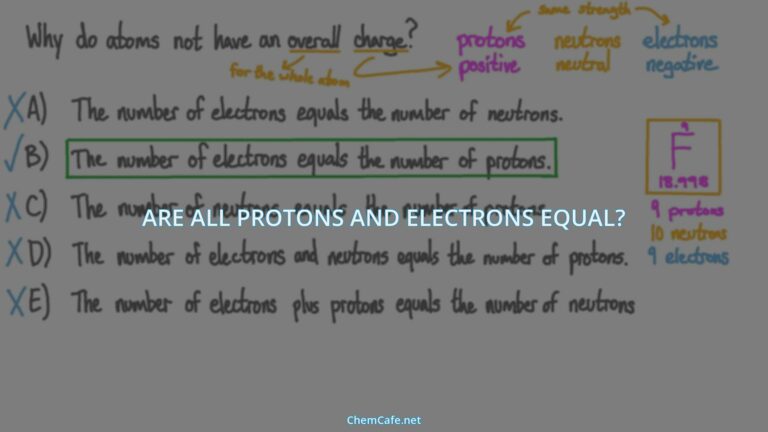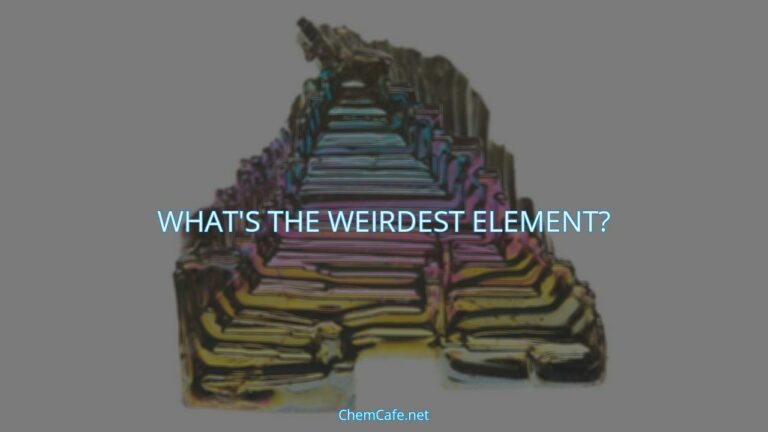When it comes to atoms, it can be difficult to keep track of all the different elements, isotopes, and particles. But understanding the nuances of each one is essential in order to fully comprehend the complexities of the universe around us. For example, one question that often comes up is “What element has 12 neutrons and 11 protons?”
Atoms are the building blocks of all matter, and they are composed of protons, neutrons, and electrons. Protons have a positive electrical charge, and neutrons are neutral. Electrons have a negative charge and orbit the nucleus of an atom. The number of protons and electrons in an atom determine its element, while the number of neutrons can vary.
Atoms of the same element can have different numbers of neutrons, and are known as isotopes. The difference in mass between isotopes is the number of neutrons. For example, three isotopes of carbon all have six protons, but have different numbers of neutrons. The one on the left has 6 neutrons, the one in the middle has 7 neutrons, and the one on the right has 8 neutrons.
Isotopes are generally written using the mass of the atom, which is equal to the number of protons and neutrons. When it comes to the question of “What element has 12 neutrons and 11 protons?”, the answer is an isotope of the element sodium, with the symbol Na-23. This isotope has 11 protons, 12 neutrons, and 11 electrons, and is the most common isotope of sodium.
Understanding the nuances of atoms and isotopes is essential in order to understand the chemical makeup of the universe. Knowing which elements have different numbers of protons and neutrons is key to recognizing the differences between different kinds of atoms. With this knowledge, we can learn more about the world around us and explore the mysteries of the universe.
What element has 12 neutrons and 11 protons?
Atoms of different elements can have different numbers of protons and neutrons, which results in different isotopes of the same element. Isotopes are atoms with the same number of protons, but different numbers of neutrons. One example of an isotope is Carbon-12, which has 6 protons and 6 neutrons.
What are Isotopes?
An isotope is an atom of the same element that has a different number of neutrons in its nucleus. The number of protons in the nucleus of an atom is what determines its identity as a particular element. For example, hydrogen has one proton, so all hydrogen atoms have one proton. However, isotopes of hydrogen have different numbers of neutrons, so they have different masses.
Isotopes of an element can have a variety of applications in different fields. For instance, isotopes of hydrogen, such as deuterium and tritium, are used in nuclear energy production. Isotopes of carbon, such as carbon-12 and carbon-14, are used in radiocarbon dating to determine the age of archaeological artifacts.
What Element Has 12 Neutrons and 11 Protons?
The element with 12 neutrons and 11 protons is sodium. Sodium is a common element that is found in nature in its pure form. Sodium atoms have 11 protons and 12 neutrons, so they have a mass number of 23. The most common isotope of sodium is sodium-23, which makes up more than 99% of all naturally occurring sodium atoms.
Other Isotopes of Sodium
In addition to sodium-23, there are other isotopes of sodium. Sodium-24 has 12 neutrons and 11 protons, so it has the same mass number as sodium-23. Sodium-25 has 13 neutrons and 11 protons, so it has a mass number of 26. Sodium-26 has 14 neutrons and 11 protons, so it has a mass number of 27.
How Are Isotopes Different from Ions?
Isotopes and ions are both forms of atoms, but they are different in one key way. Isotopes differ from ions in that isotopes have the same number of protons and electrons, while ions have a different number of protons and electrons. This difference in charge gives ions their electrical properties, which allow them to interact with other ions and molecules in interesting ways.
In summary, the element with 12 neutrons and 11 protons is sodium. Sodium-23 is the most common isotope of sodium, and it has a mass number of 23. Sodium also has other isotopes, such as sodium-24, sodium-25, and sodium-26, which have different numbers of neutrons and different mass numbers. Isotopes are different from ions in that they have the same number of protons and electrons, while ions have different numbers of protons and electrons.
What atom has 11 protons and 12 neutrons?
Atoms are the building blocks of matter and are composed of particles like protons, neutrons, and electrons. Isotopes are atoms of the same element with different numbers of neutrons in their nuclei. The number of protons in an atom determines its identity, while the number of neutrons can vary.
When answering the question “what atom has 11 protons and 12 neutrons?”, we must look at the element Sodium, which has an atomic number of 11. This means it has 11 protons and 12 neutrons in its nucleus. It also has 11 electrons outside the nucleus, making it an electrically neutral atom.
Sodium Isotopes
Sodium has three isotopes, all of which have 11 protons. The difference between them is the number of neutrons in the nucleus. Sodium-23 has 12 neutrons, Sodium-24 has 13 neutrons and Sodium-25 has 14 neutrons. The mass of an atom is equal to the number of protons plus the number of neutrons, so Sodium-23 has a mass of 23, Sodium-24 has a mass of 24, and Sodium-25 has a mass of 25.
Sodium Ions
Sodium is one of several atoms that easily donates an electron, leaving it with just 10 electrons outside the nucleus. Since there are still 11 protons, the atom now has a charge of plus one, making it a sodium ion. This makes it an important component of salt, and it is also used in a wide range of industrial processes.
Other Elements with 11 Protons
Other elements that have 11 protons include Magnesium, Boron, and Aluminum. Magnesium has 12 neutrons and 12 electrons in its nucleus, making it an electrically neutral atom. Boron has 5, 6, or 7 neutrons and 5 electrons, meaning it has a charge of plus or minus two, making it a Boron ion. Aluminum has 13 or 14 neutrons and 13 electrons, making it an electrically neutral atom.
The answer to the question “what atom has 11 protons and 12 neutrons?” is Sodium. Sodium is an element that has three isotopes, all of which have 11 protons and different numbers of neutrons. It is also one of several atoms that easily donates an electron, leaving it with just 10 electrons outside the nucleus and a charge of plus one, making it a Sodium ion. Other elements that have 11 protons include Magnesium, Boron, and Aluminum.
Which element has 12 neutrons and 11 electrons?
Atoms of elements with different numbers of neutrons are called “isotopes” of that element. Isotopes are atoms of the same element with different numbers of neutrons in their nuclei. Let’s look at the example of carbon. There are three isotopes of carbon. They all have 6 protons, since they are all carbon atoms.
The atom on the left has 6 neutrons, the atom in the middle has 7 neutrons, and the atom on the right has 8 neutrons. Atoms are electrically neutral, so they have the same number of negatively charged electrons as positively charged protons.
Another example of an element with different numbers of neutrons is sodium. Sodium has 11 protons and 12 neutrons in its nucleus, and 11 electrons outside the nucleus. Sodium is one of several atoms that easily donates an electron. This leaves just 10 electrons, but since there are still 11 protons, sodium has a plus one charge. This charge means it’s a sodium ion. Certain other elements tend to gain electrons.
Naming Isotopes is important because neutrons have no electrical charge, changing the number of neutrons does not affect the chemistry of the element. It does, however, change the mass of the element. Isotopes are atoms that have the same number of protons and electrons, but a different number of neutrons.
Atomic mass is the sum of the number of protons and neutrons in the nucleus of an atom. The atomic mass of a given element is the average mass of all the isotopes of that element. The atomic mass of sodium is 22.9898. This is the average mass of all the naturally occurring isotopes of sodium.
When referring to a specific isotope of an element, the atomic mass and the number of neutrons are always given. For example, sodium-23 has an atomic mass of 23, with 11 protons and 12 neutrons. This is the same element as sodium-24, which has an atomic mass of 24 and 12 protons and 12 neutrons.
In summary, the element which has 12 neutrons and 11 electrons is sodium. Sodium has 11 protons and 12 neutrons in its nucleus, and 11 electrons outside the nucleus. Sodium is one of several atoms that easily donates an electron. This leaves just 10 electrons, but since there are still 11 protons, sodium has a plus one charge. This charge means it’s a sodium ion. Certain other elements tend to gain electrons.
Naming Isotopes is important because neutrons have no electrical charge, changing the number of neutrons does not affect the chemistry of the element. It does, however, change the mass of the element. Isotopes are atoms that have the same number of protons and electrons, but a different number of neutrons. Atomic mass is the sum of the number of protons and neutrons in the nucleus of an atom. The atomic mass of a given element is the average mass of all the isotopes of that element. When referring to a specific isotope of an element, the atomic mass and the number of neutrons are always given.
What has 12 neutrons and 11 electrons?
Atoms are made up of protons, neutrons, and electrons. These three particles have a unique relationship to each other, and when combined, form the atom. Knowing how to identify the number of protons, neutrons, and electrons in an atom can help us understand how the atom works and what makes it unique.
One type of atom that has a unique combination of particles is sodium. Sodium has an atomic number of 11 and a mass number of 23. This means it has 11 protons, 12 neutrons, and 11 electrons. Let’s take a closer look at why this combination of particles is so special.
What is an Isotope?
An isotope is an atom with the same number of protons and a different number of neutrons. This means that the atomic number of the isotope is the same, but the mass number is different. In the case of sodium, its atomic number is 11, meaning it has 11 protons. The mass number is 23, so this tells us that it has 12 neutrons.
How to Calculate the Number of Protons, Neutrons, and Electrons?
To calculate the number of protons, neutrons, and electrons, you need to know the atomic number and the mass number of the atom. The atomic number tells you the number of protons, which is always the same as the number of electrons. The mass number tells you the number of protons and neutrons, so you can subtract the atomic number from the mass number to find the number of neutrons.
For example, sodium has an atomic number of 11 and a mass number of 23. This means it has 11 protons and 12 neutrons (23-11 = 12). Since the number of protons is always the same as the number of electrons, sodium also has 11 electrons.
Subatomic Particles in the Nucleus
The nucleus of an atom is made up of two subatomic particles: protons and neutrons. Protons are positively charged particles that have a mass of 1 atomic mass unit (amu). Neutrons are neutral particles with a mass of 1 amu.
Together, protons and neutrons make up the mass of the atom. The number of protons determines what element it is, while the number of neutrons determines the isotope of the element.
What Does Atomic Number Represent?
The atomic number (the smaller number) tells us the number of protons in the nucleus of that atom. This number is important because it determines what element the atom is.
For example, sodium has an atomic number of 11, so it has 11 protons in its nucleus. This means it’s an element with the symbol Na and belongs to the alkali metal group.
Knowing the number of protons, neutrons, and electrons in an atom can help us understand its properties. We can use this information to study how atoms interact with each other and form compounds. Understanding the relationship between the three particles can help us understand the fundamentals of chemistry.
What element has 11 protons 9 neutrons and 11 electrons?
Atoms are the building blocks of life, and understanding the composition of an atom is essential for understanding basic chemistry. The element with 11 protons, 9 neutrons, and 11 electrons is sodium. Sodium is a metallic element with atomic number 11 and symbol Na.
Atomic Number and Mass Number
Atoms are made up of protons, neutrons, and electrons. The number of protons determines the atomic number, which is why sodium has an atomic number of 11. The 11 protons have a charge of +11 while the 10 electrons have a charge of -10. This results in a net charge of +1 (# +11 + -10 = +1#).
The mass of an atom is the sum of the number of protons and neutrons, and the mass number of an element tells us the number of protons AND neutrons in an atom (the two particles that have a measurable mass). Sodium has a mass number of 23amu. Since sodium has 11 protons, the number of neutrons must be 23 – 11 = 12 neutrons.
Common Isotope of Sodium
Sodium has several isotopes, which are atoms of the same element with different numbers of neutrons in their nuclei. The most common isotope of sodium is #””_11^23Na#. This isotope has 11 protons, 12 neutrons, and 11 electrons.
Atoms are Neutral
Atoms are electrically neutral, which means they have the same number of positively charged protons and negatively charged electrons. For example, carbon has an atomic number of 6, so it has 6 protons and 6 electrons. The number of neutrons can vary, however, resulting in different isotopes.
Examples of Isotopes
Here are a few examples of isotopes:
- Magnesium has a mass number of 24, so it has 12 protons, 12 neutrons, and 12 electrons.
- Potassium has a mass number of 39, so it has 19 protons, 20 neutrons, and 19 electrons.
- Carbon has three isotopes: #””_6^12C#, #””_6^13C#, and #””_6^14C#. They all have 6 protons, since they’re all carbon atoms. The atom on the left has 6 neutrons, the atom in the middle has 7 neutrons, and the atom on the right has 8 neutrons.
In conclusion, the element with 11 protons, 9 neutrons, and 11 electrons is sodium. Sodium is a metallic element with atomic number 11 and symbol Na. It has a mass number of 23amu, so it has 11 protons and 12 neutrons. Sodium also has 11 electrons, giving it a net charge of +1. Sodium is the most common isotope of sodium, but there are also other isotopes that have different numbers of neutrons.
What element has 11 protons?
Atoms of an element have the same number of protons, but they can have different numbers of neutrons. The number of protons in an atom is known as its atomic number. An element with 11 protons is sodium.
Sodium is a chemical element with the symbol Na and atomic number 11. It’s a soft, silvery-white, highly reactive metal that is found in many minerals, including table salt. Sodium has 11 protons and, since it is neutral, it also has 11 electrons.
The Mass Number of an Atom
The mass number of an atom is the total number of protons and neutrons present in its nucleus. In the case of sodium, the mass number is 23amu. This tells us that there must be 12 neutrons in the nucleus of a sodium atom, as the number of protons (11) plus the number of neutrons (12) equals 23.
Isotopes of an Element
Isotopes are atoms of the same element with different numbers of neutrons in their nucleus. For example, there are three isotopes of carbon: C-12, C-13 and C-14. These all have 6 protons, as they are all carbon atoms. But the number of neutrons in the nucleus of each atom is different.
Atoms are electrically neutral, so they have the same number of negatively charged electrons as positively charged protons. Carbon-12 has 6 neutrons, carbon-13 has 7 neutrons, and carbon-14 has 8 neutrons.
To answer the question “what element has 11 protons?” we can say that the element is sodium, with a mass number of 23amu. This tells us that sodium has 11 protons and 12 neutrons, as the mass number minus the atomic number is equal to the number of neutrons. We can also explore the different isotopes of an element to see how their number of neutrons differs.





Leave a Comment